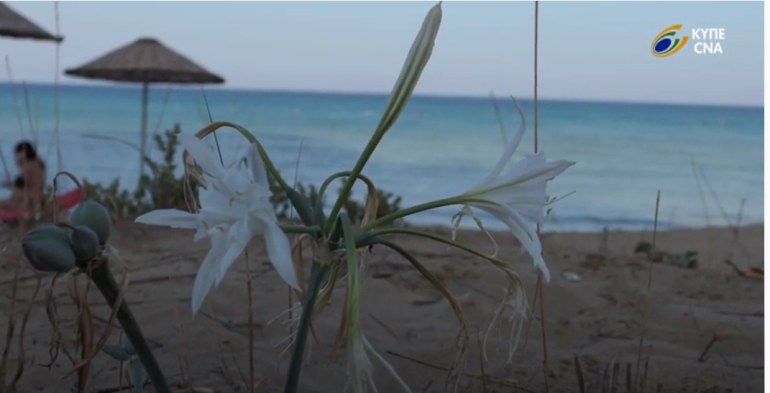The beach of Chrysi Akti in the enclosed city of Famagusta was decorated again this year by the blooming white lilies of the sea. Among the sunbeds and umbrellas that have been set up by the pseudo-state and in front of the ruined hotels and apartments of Famagusta, they still bloom and beautify the beach of the occupied city.
This is the lily of the sea or the beach (Pancratium maritimum), as its scientific name is. We find it in bloom on several of our beaches from August to October.
The name of the genus Pancratium comes from the Greek words pan and krataios, which means strong, referring to its resilience to thrive in dry sandy soils but also to its medicinal properties. The name of the species maritimum (beach) indicates the natural area of the plant. The lily of the sea, which is a locally common, native plant of Cyprus, is found in many areas with dunes and sandy beaches, such as Famagusta, Akama National Forest Park, Akrotiri Peninsula, Ayia Napa, Protaras, Agios Ambrosio of Kyrenia, the Karpasia Peninsula and elsewhere.
The plant had religious value and was known since antiquity, as it was found in ancient illustrations of the Minoan era in the palaces of Knossos and in archeological sites of Santorini (Cape Thira). It is also mentioned by Theophrastus and Dioscorides.
The sea lily is included in the Red Book of the Flora of Cyprus, where it is characterized as Near threatened. Although characterized by its durability, the habitat and population of the plant are under great pressure due to the intense human activity in the coastal areas. Fortunately, a significant part of its population is located in protected areas of the Natura 2000 Network.
The genus Pancratium includes about 15 species, spreading to Mediterranean Europe, North Africa and the tropics of Asia. In Cyprus, the genus is represented by the pan-national coast, which belongs to the family Amaryllidaceae (Amaryllidaceae), numbering over 1600 species worldwide, with the majority of them being used as ornamental, especially due to the beauty and pleasant their fragrance.
The pancratium beach is an upright perennial plant with a bulb up to 15 cm long, covered with papyrus or membranous, brown tunics. Its five to six leaves are linear or striped, glaucous, appearing after the flowers. The flowering stem is strong, pressed, 7-30 cm high, while its flowers are white and very fragrant.
